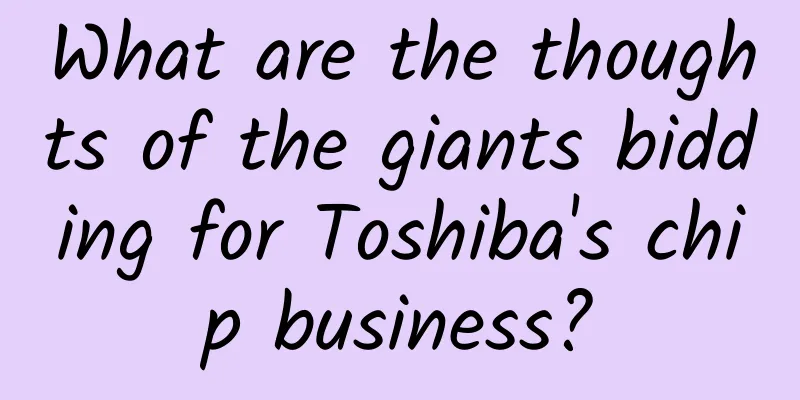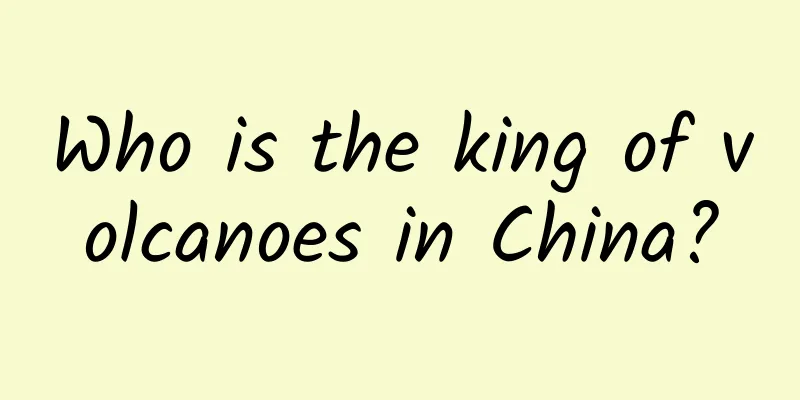What are the thoughts of the giants bidding for Toshiba's chip business?

|
If the global chip companies were ranked, Toshiba chips would hardly make it into the top five. However, when it faced the dual pressures of losses and business write-downs, Toshiba chips became a hot commodity and were favored by several consortiums and companies. Especially Terry Gou, chairman of Hon Hai Group, who wants to acquire Toshiba chips for US$27 billion. Many global giants have launched bidding for Toshiba's storage business. Now Broadcom, Western Digital, Hynix and Foxconn have entered the second round of bidding. According to reports, a person related to Foxconn recently confirmed to the media that its parent company Hon Hai is leading the bid for Toshiba's chip business. Currently, Apple, Dell and Kingston have joined the Hon Hai consortium. Why did Toshiba chips become the target of mad rush among giants? Why did Terry Gou spare no expense? "Selling oneself" is a helpless act For Toshiba, its semiconductor business is the most profitable. Statistics show that in the third quarter of 2016, Samsung ranked first in the NAND flash memory market with a revenue of US$2.744 billion, followed by Toshiba with a market revenue of US$2.027 billion and a market share of about 19.8%. Toshiba, which has a brilliant "report card", embarked on the road of business restructuring and "selling itself to save the company" as early as a year ago. Toshiba's move was really helpless. First, apart from the semiconductor business, Toshiba's other businesses have been losing money since 2013. Toshiba's 2016 financial report showed that the company suffered a net loss of 950 billion yen (about 8.4 billion U.S. dollars) in fiscal 2016, which was the worst performance in Toshiba's 142-year history. Last year, in order to ease the funding problem, Toshiba was forced to sell Toshiba Medical to Canon for 6 billion U.S. dollars. Recently, Westinghouse, a US nuclear power company under Toshiba, filed for bankruptcy, which brought huge economic losses and undoubtedly exacerbated Toshiba's financial difficulties. The Japanese government, as the last hope, had no intention of helping. In desperation, Toshiba had to sell its most "money-rich" Toshiba Semiconductor to "keep its life." A change in the landscape After Toshiba announced the sale of its semiconductor business, a large number of bidders emerged in the first round of bidding, including US semiconductor company Broadcom, SK Hynix (South Korea), US investment fund KKR, and Hon Hai Precision Industry. Among them, Broadcom cooperated with US investment fund SilverLake, SK Hynix joined hands with Bain Capital, and KKR joined hands with Japan's public-private joint venture fund Industrial Innovation Organization. Hon Hai Precision Industry Co., Ltd. also intends to join hands with Apple and Amazon to bid for Toshiba's semiconductor business. Although it is not clear how Apple, Amazon and Hon Hai Precision Industry will cooperate, Guo Taiming has expressed his determination to win on many occasions. Whether it is a consortium or Terry Gou's Hon Hai Precision, Toshiba will not have trouble finding a buyer, and its financial problems will also be alleviated. However, different buyers have their own "little calculations" for the bidding. Toshiba chips account for about 1/5 of the global market share, and its products are essential core components for smart terminals such as smartphones, tablets and laptops. In particular, as the smartphone market continues to expand, Toshiba's chip market share is expected to continue to increase. No matter which bidder Toshiba chips end up in, it will undoubtedly directly help it become the world's core chip supplier, which will also change the global market structure, especially the East Asian market. Terry Gou's "Empire Dream" Compared with other bidders, Terry Gou's acquisition of Toshiba seems to have more interpretations. In fact, the acquisition of Toshiba chips can be seen as part of Terry Gou's establishment of another "Samsung". Early Samsung, like Foxconn today, was a foundry for other companies. In the process of foundry, Samsung has been continuously transforming into an independent brand. From a single component and panel to today's terminal products, Samsung has gradually created an "empire" with strong vertical and horizontal correlation capabilities. Foxconn already has strong manufacturing capabilities and naturally does not want to stop at foundry. However, there are still many components missing on the road to transformation. It hopes that Foxconn will gradually extend its capabilities to the design and production of components and the creation of independent brands based on foundry, and continue to extend to the upstream and downstream of the industrial chain, while gaining more profits from the industrial chain and enhancing its voice. Guo Taiming acquired Sharp, completing the layout of the panel business from low-end to high-end, and basically mastered the independent design and production capabilities of home appliances. The acquisition of Toshiba chips also had the same considerations. The combination of Foxconn, the company with the strongest manufacturing capabilities in the industry, and Toshiba Semiconductor not only means that it will become a leading company in the chip market, but also means that the new Toshiba chip business will give rise to more changes in the upstream and downstream of the industrial chain. It is said that Apple has always had the habit of providing financial support to suppliers to ensure that its product parts are adequately supplied, and Toshiba is one of them. At the same time, half of Foxconn's profits come from OEM for Apple. Once Foxconn and Toshiba "merge", Apple's production and manufacturing will naturally tilt towards Foxconn. For Terry Gou, this is not only a way to grab market share from Samsung, but also a step towards its own brand. Some time ago, Sharp mobile phones just announced their return to the Chinese market, and Foxconn was responsible for its OEM production; going back in time, the return of Nokia mobile phones was also inseparable from Foxconn. This series of events put together roughly depicts Guo Taiming's "empire dream": from downstream product assembly and parts production to the upper-level semiconductor industry and the independent product brands that will emerge, it will transform into a vertically integrated enterprise, a business "empire" completely controlled by itself. As a winner of Toutiao's Qingyun Plan and Baijiahao's Bai+ Plan, the 2019 Baidu Digital Author of the Year, the Baijiahao's Most Popular Author in the Technology Field, the 2019 Sogou Technology and Culture Author, and the 2021 Baijiahao Quarterly Influential Creator, he has won many awards, including the 2013 Sohu Best Industry Media Person, the 2015 China New Media Entrepreneurship Competition Beijing Third Place, the 2015 Guangmang Experience Award, the 2015 China New Media Entrepreneurship Competition Finals Third Place, and the 2018 Baidu Dynamic Annual Powerful Celebrity. |
>>: 50th Anniversary: Nissan and Italdesign Create the Ultimate GT-R50
Recommend
Don’t wear yellow or green clothes when you go out! Otherwise…
Recently, I always encounter some people walking ...
Moji Weather is about to go public. How far can Moji, which makes 99% of its profits from advertising, go?
The business model of tool products has always be...
The reason you are no longer satisfied with your sex life may be just because you are addicted to porn movies
Few things are truly universal. Although people a...
Besides rewards, what else are users interested in?
We want users to take action, but when inducement...
Remember these rules, and you can get users to voluntarily help you promote like a snowball without spending a penny.
In this era where mobile phone addiction is rampa...
How does a new website build its own keyword library?
Having worked on websites for many years, I attac...
The "Time Cinema" of the dinosaur era, this is Lufeng, Yunnan!
The discovery of the Lufeng ancient vertebrate fa...
Why are you forced to insert ads? Talking about HTTPS connections
I believe many of my friends have encountered the...
The studio often uses APP to attract new users, and sells 2000+ free shares
The studio often uses APP to attract new users, a...
Wang Xun's article master class teaches you different ways to write articles
Wang Xun's article master class teaches you d...
Beauty is in the eyes of the beholder? The secret lies in the difference in aesthetics
We often say "Beauty is in the eyes of the b...
Iris recognition, gait recognition...the best cryptography is hidden in the human body!
When it comes to passwords and cryptography, peop...
There is a lot of sand on the earth, and there are even more stars in the universe. How many galaxies are there in the universe?
How much sand is there on Earth? This is a questi...
The list of finalists for the first 51CTO Developer Competition has been announced
The list of finalists for the first 51CTO Develop...
Exclusive | Behind the popularity of Travel Frog: 4 people developed it for 10 months, relying on one strong point to win over Chinese players
Recently, a game called "Travel Frog" h...









